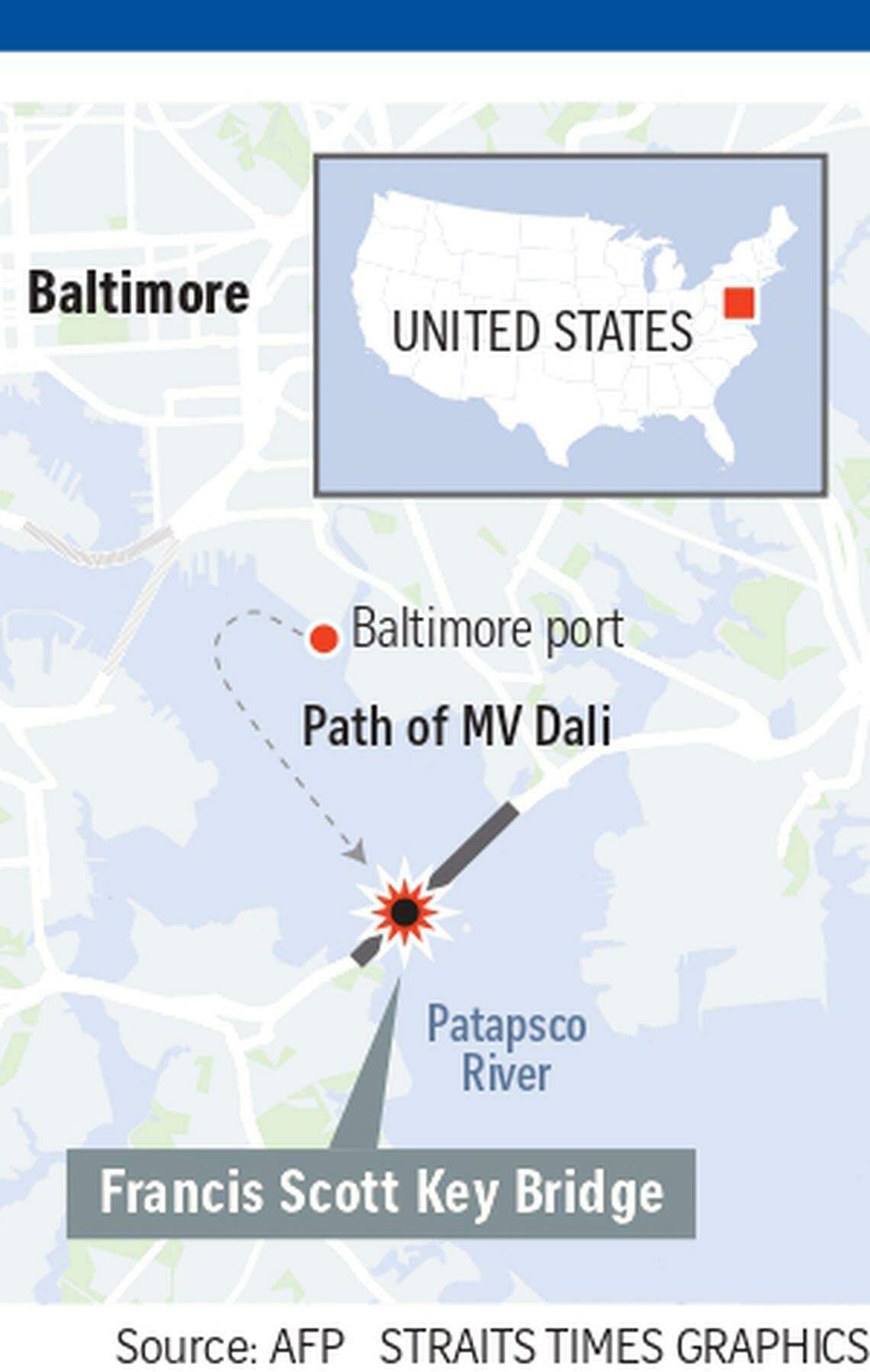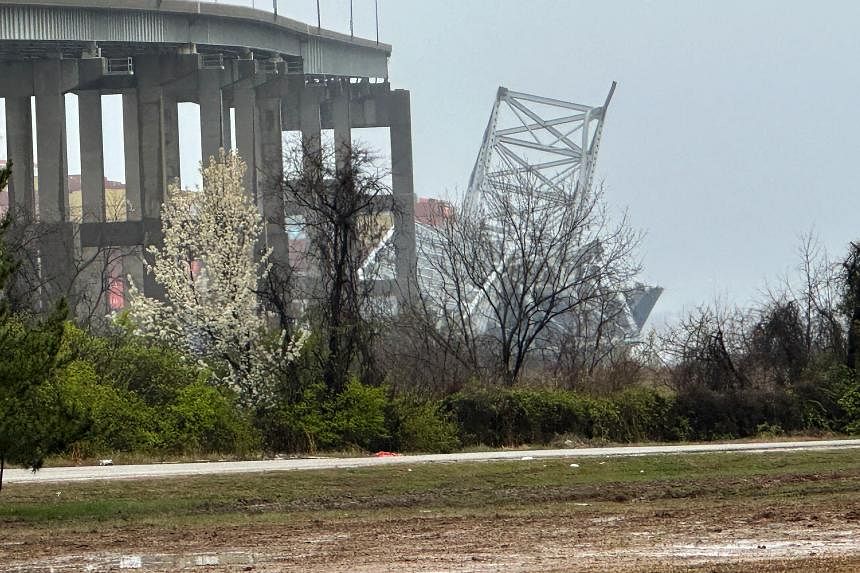BALTIMORE, Maryland - Not far from the ramp that leads to the elegant rusty-red arches of the downed Francis Scott Key Bridge, a policeman sat with a heavy heart.
“I can’t bear to go down there just yet,” the young officer said as he sat in a parked police cruiser, its lights flashing to warn the public not to enter the cordoned-off area in Fort Armistead Park by the Patapsco River.
A lot remains to be known about the March 26 incident where the Singapore-flagged Dali, a vessel carrying 4,700 containers, rammed into the 2.6km, four-lane bridge after losing propulsion.
Within minutes, the bridge collapsed into the frigid waters.
The scene – so vivid on TV screens, shot from helicopters and boats – is a monochrome grey at this distance, a few hundred metres away.
The ramp rises above the river and ends abruptly in a mangled mass of steel.
The iconic 47-year-old bridge was a crucial link between Baltimore and the national capital, a conduit for commuters, tourists and goods moving in and around Baltimore.
But it was so much more.
Ms Tina Painter, 54, who works in the county transportation department, said she had not worked up the courage to go out to the river either.
“I want them to find all the people who went down with it first, and then give it some time,” she said, stopping to talk while on a grocery run.
Eight people were believed to be on the bridge when it collapsed; two were rescued, and the bodies of two had been recovered as at March 28.
Ms Ghazala Ahmed, a Baltimore native who moved to Chicago after her marriage in 2023, said the bridge was an inseparable part of her childhood.
On a week-long trip to visit her parents, the pregnant 27-year-old clinic assistant said she remembered sketching the bridge with crayons when she was in middle school.
“I feel like I will never be able to come home again,” she said.

For Mr Robert Carrigan, a bus mechanic from the town of Glen Burnie, a 20-minute drive from the site where the bridge stood, the worries were more concrete.
“What is to come next?” said the 61-year-old, who remembers the thrill when the bridge was opened in March 1977 to high expectations. Its collapse is a blow to Baltimore’s economy, he said.
The Port of Baltimore created around 15,300 direct jobs, with nearly 140,000 in related services in 2023. Since the bridge collapsed, traffic for international cargo has been suspended until further notice.
“A lot of my friends work there,” Mr Carrigan said.
“What if the shipping business migrates up and down the coast, to the ports in New York, Pennsylvania, New Jersey, Virginia, Georgia... and the jobs don’t come back?” he asked.
The Great Baltimore Fire ripped through Baltimore’s downtown 120 years ago, forcing the city to re-imagine and reinvent itself. Its journey since then has been chequered.
Mr Carrigan said the bridge’s collapse feels like another call for Baltimore – the home town of Olympic champion Michael Phelps, former speaker Nancy Pelosi and writer Edgar Allan Poe – to get back on its feet.

The city’s population peaked at around 950,000 in 1950 but declined to around 585,000 in 2022 – a loss of nearly 40 per cent.
Its transition from its historical economic base in manufacturing, shipping and steel to a more service- and technology-driven economy has been challenging.
The familiar structure of the Francis Scott Key Bridge had seemed to connect the past and future. But the link now seems deceptive.
In the pre-globalisation age when the bridge was built, container ships were much smaller than the 300m-long Dali – a mid-sized vessel capable of carrying up to 10,000 containers.
To put it bluntly, the bridge had not kept pace.
And it is not the case that US ports have been neglected.
Several of them have invested in upgrades, especially to handle bigger ships.
A few years ago, the Bipartisan Infrastructure Law set aside US$17 billion (S$23 billion) for port repairs and expansion.
But there is still a mismatch between resources and needs.
A study of the National Bridge Inventory by the American Road and Transportation Builders Association in 2023 found that 36 per cent of all US bridges require major repair work or replacement.
The study found that some 7 per cent of all bridges are “structurally deficient”, a rating which means the bridge rates 4 or below on a safety scale of 0 to 9 in at least one of the key elements – the deck, superstructure, substructure or culverts.
Mr Benjamin Dierker, executive director of the Alliance for Innovation and Infrastructure, a non-partisan think-tank, said the tragedy underscores just how interconnected the nation’s infrastructure is.
“It shows us how reliant we are on roads, bridges, ports and more for our supply chains, commutes and ability to connect,” he said.
“As the Key Bridge is rebuilt, it will be important not to rebuild it to its old standard, but to one that can endure similar and anticipated events in the future.”



